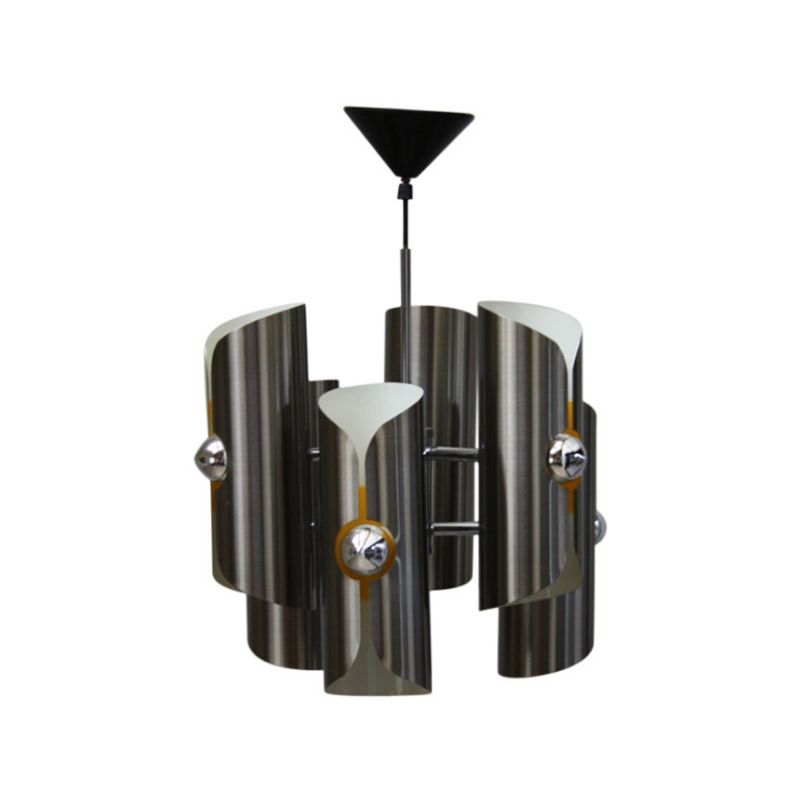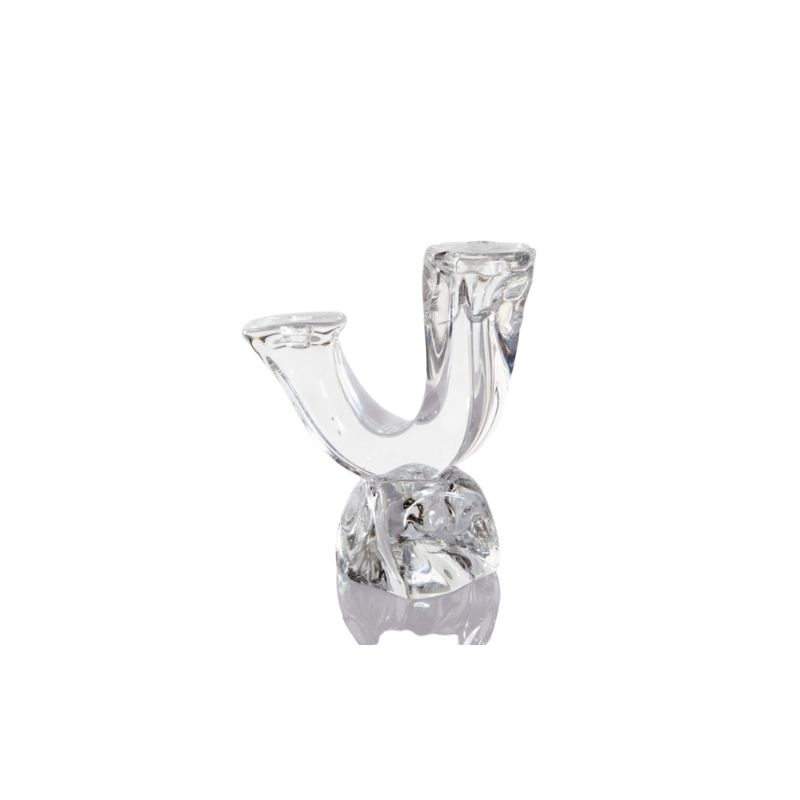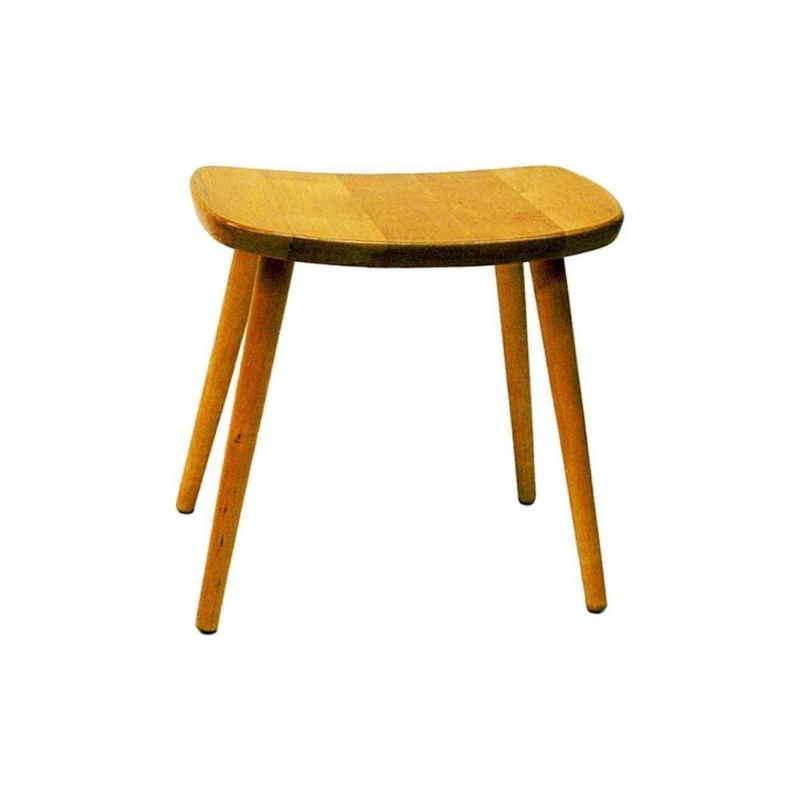Hello, everyone. I am new to this forum but have been monitoring your discussions for a few weeks and acquiring quite an education in Modernism. I am a "traditional" antique dealer in SC, supplying bow front mahogany chests, linen presses, silver 5-arm candleabras, etc. to my clients. I have recently purchased, however, a 1957 modern home in Clemson and want to furnish it in the period. Hence, my interest in your awesome website.
I must admit some confusion regarding the "knockoff" vs. "repro" debate that seems to be a recurrent theme. In the 19th century arena, we dealers have our masters, i.e. Phyfe, Hepplewhite, Sheraton, etc. Their pieces have become iconic, not unlike those pieces of Eames, Saarinen, Wormley, etc. of your era of interest. However, their actual pieces are considered museum quality and are in the stratosphere as far as price goes and not available to the general public, not even the very, very wealthy. What we sell are pieces made "in the style" of those icons that often command a hefty price so long as they are "of the period". We do not consider these pieces either knockoffs or reproductions. These pieces are always made during the same timeframe, usually signed and have acquired the patina of age.
The pieces we cannot abide are the knockoffs and repros coming out of Indonesia and China that are total crap. We also have a problem with the pieces from Europe that have been "rehabbed" to the point that nothing original remains except perhaps the doors and the door hardware.
My question is this. Why do you seem to regard something made in 2008 as more desireable than something (i.e. Burke and Plycraft) that was at least made in the right decade?
I'm trying to anticipate the responses, so I will explain further. I get that the companies that your icons designed for are still alive and well. So why are you more willing to shell out the big bucks for a Knoll piece made in 2008 (when the designers have been dead for decades) than you are to embrace other makers from the same period as the originals?
I am anxiously awaiting to be enlightened. Many thanks.
More desireable or more...
More desireable or more affordable? In most any market, it will always be a question, and in many cases - more unfortunately - the answer for many will have to be affordable.
With regard to Burke and Plycraft, well, they aren't Knoll and Herman Miller, for certain, but I don't entirely resist them - apples to oranges they may be really, but if the price is right I've found you won't mind so much when your brat/cat ruins one.
All things being equal, you know, is a phrase that shouldn't exist.
i think its different for...
i think its different for some people. i would rather have everything vintage in my home instead of going to design within reach and furnishing my house. i would rather have a plycraft lounger in good shape than an eames lounger from design within reach. the old stuff just seems to have more character, and it feels like the pieces all have a "story or a life" to them although we may not always know what it was
Thx for input
I think I'm liking the vintage pieces better than the new myself. I'm having such a great time "stalking" furniture for my new house. Here in the Carolinas you can still find treasures at flea markets and thrift stores because many people don't know what they have. I found a Wormley Dunbar sofa at a flea market for $35!!!
Nice Find!!
I just think it boils down to personal preference, but I would agree most people would opt for new Herman Miller or Knoll rather than some of the lesser known vintage companies. I am not saying I do one over the other. In fact I'm a fan of both. I have a new Herman Miller Eames lounge and ottoman, because the vintage ones often give out and I want to use it for years every day without worry. One of my favorite pieces is a rarely celebrated lesser known chair by Ib Kofod Larsen. I love it regardless of its lack of popularity. There are so many designers on this planet past and present. Not every one of them can design for Herman Miller or Knoll or Vitra. There are severa1 arguements either way, most of them valid.
1. Getting a reupholstery job, unless you have someone you use frequently, is a really a gamble. That's why some may prefer buying new upholstered pieces.
2. Herman Miller and Knoll had the smarts and good fortune to hire the best of the best. Most modernists seem to be really most intrigued with specific designers and their philosophies rather than a time period. Therefore the designer is what is desirable, not the manufacturer so much. If it was just a time period thing, we could all buy cheap wonky retrotastic crap. But the period, while there are certain hot spots in history for modernism, is not the forefront of concern. For example, a really informed modernist might want a Mies piece from the 20s, a Girard piece from the 60s, and a Marcel Wanders piece from yesterday.
3. Certain pieces have a pretty good history of failing mechanisms but are still desirable. For instance, the Eames lounge and ottoman. The back often comes off where the shocks mounts dry out and age. Wires often come loose and are unpredictable on Eames and Bertoia wire pieces.
4. Some people just plain hate patina. I love it. Some people want everything squeaky clean.
5. Unfortunately, some people want their house to look like a DWR showroom. I think it's very predictable and boring. Even with many of the same pieces that DWR carries new, a place can own a more authentic feel through the obviousness of its vintage IMO.
6. Like many of the fine antiques you deal with, many pieces are simply unavailable or out of this world regarding price. We spend a lot of time bitching about knock-offs, reproductions, vintage etc. on this forum. The pieces we collect are generally well under a century old. There will be a time when it's all gone. The only way to have it is a lot of money, family heirlooms, and luck. Most people will have to buy reproductions period one day.
I would urge you to not be concerned with making it look like the 50s. There are great modern pieces from the last 100 years, including today. Sometimes when people try to mimmick a time period too closely it can get rather cliche. I am a big fan of just buying what you like.
cont.
I would like to add that Plycraft, while not seen as on par with HM or Knoll, is a quality manufacturer that has produced pieces by some good designers. As far as I know Burke is what I would call simply a knock off company. Plycraft employed George Mulhauser, who worked for George Nelson at Herman Miller for years. He designed Nelson's Coconut chair and I am sure he assisted on a slew of other pieces. He designed the best Plycraft loune as well, the one with the tufted buttons and winged plywood arms. I love that one. Plycraft also produced the Cherner chair, which is still sold by DWR today. The vintage Cherner chairs are highly collectable and desirable. Companies like Burke cannot claim the same.
Good Luck! Have fun!
Authenticity as truth
With design (and modernism in particular) I'm being more and more pulled towards this idea of authenticity as truth. Perhaps it can be best summed up by the Eames' notion of the Guest/Host relationship. Looking back to older forms of etiquette we see that there are certain things expected of both the guest and the host. The guest must be courteous & respectful of the host's space, and the host must be generous and gracious to the guest. The interaction fulfills the needs of both: it is a 'please/thank you' interaction.
If we take a step into the world of design we transfer the needs of the Guest (user) and the Host (designer/manufacturer) into objects designed to solve a problem. As with all creative output the voice of the creators is always present. It is their narrative being expressed. It is an intimate expression of how they view the problem. Eames worked with the human body, Bertoia worked with space, Corb worked with logic.
When we look at the historic copies like Plycraft or Burke we see a less truthful expression. Burke & Plycraft were never invested in the question so their answer's are not as honest, as personal. They are the plagiarists, stealing the good stuff - but the rest of the pieces never quite live up to the stolen highlights.
I own an old plycraft and my office has an Eames lounge. I regularly sit in both and they are incomparable. The forms are vaguely similar but, as charles said, "the details make the product". Where the Eames is sleek and stylized the Plycraft is clunky and labored; where the Eames is scaled & proportioned the Plycraft is squat and bulky; and where the Eames pivots noiselessly and flexes gently the Plycraft squeaks, groans, cracks & pops. Visually similar, but worlds apart in material, comfort, and function.
In theory, the companies like Knoll & Herman Miller that produce the iconic pieces are committed to maintaining the truth that the designers set forth. In many cases it was these parent companies that fostered & cultivated the relationships that produced these designs. As such they lay claim to be authentic (I believe rightfully so) - maintaining original drawings, toolings etc. Other companies, such as Vitra, have sought out or been sought after by foundations and heirs of the designers as agents of producing the designs as authentically as possible. What they lack in historical connections they seem to make up for with a dedication to preserving Design heritage.
Which is different than
That is not to say that there aren't valid points to be made about ideas influencing one another. Line up Saarinen's Tulip, Eames' Plastic, and Bertoia's Diamond chairs and you will see commonality. Follow the progression of Thonet & Aalto's designs using bentwood into the Eame's LCW. Take that a step further into Jacobsen's Ant & 7 Series. Go even further into Plycrafts' Cherner chair.
The difference though, is that these developments are clearly influencing each other but not copying each other.
Also - there are many lesser known designers who's work is very well done. And they should be included in the development of any collection altho not just to avoid that dreaded result of looking like DWR. They should be included because they add variety, poetry and depth to a home. They speak to the personal choices made by the owners of the home.
PS. Whitespike - Plycraft wasnt that great of a company. They were located just north of Boston and I've been doing some research into them...sketchy to say the least. The Cherner chair is beautiful - but even that has a sordid history!
I risk repeating some of the...
I risk repeating some of the stuff LuciferSum and Whitespike have already talked about. And if there is any conflict, I strongly suggest you take their word over mine ^^.
But here is my two pence worth.
I am not expert on Modern Classics, and have next to no clue on antique furniture.
It did however occur to me that part of the reason why antique pieces fetch so much, while "vintage" modern classics tend to fetch less than their brand new counterparts (bar certain exceptions) is because:
- for the antique pieces, the designer and the maker were one and the same, you essentially had one man practicing his craft. The result being, the value is all tied up in him both designing AND making the item. It also meant that supply was extremely limited.
- For our modern classics, the designer were one entity (or two) and the manufacturers where another. Ok, they had some control over the process, but essentially it was another entity all together.
E.g Knoll manufactured for Mies, Bertoia etc, Herman Miller for Eames, George Nelson etc.
So you have this split between the value lying in the design on the one hand, and the people that can most faithfully re-produce them on the other, therefore resulting in the most faithful re-productions being worth a tidy sum.
The other point I suppose is that a lot of antique furniture from the 1800s onwards were made from good quality solid wood with older staining and joinery techniques. Materials like ancient rosewood, if taken care off, I am told, age beautifully. Therefore age gives an antique piece its value.
For a lot of the modern classics ... well you have plywood, chrome wires, moulded fiberglass etc. Age doesn't really do such materials any favors generally.
There you go. My two pence worth.
GMT
All good points
Thanks for all of your input. You all make some valid and thought-provoking points. By the way, GMT, since the Womb chair is turning 60 this year, you don't have too many years left to claim that you are clueless about "antiques". In fact, in about 15 years, all of you will be considered antique experts!
Riki...this is how I see it:
A knockoff is an unauthorized duplicate copy of a well designed piece that either was or is still being made by the original manufacturers or by someone with legal liscensing arrangement.
I also consider Burke and Plycraft knockoffs too, but there is an argument that they made design changes to the Saarinen and Eames stuff and were not exact knockoff copies.
There's the exceptions, though (in my opinion):
* The most heinous would be the Chinese knockoffs of currently legally produced furniture.
* Unauthorized knockoffs of products no longer in production, even though bad, are slightly less so.
I wouldn't be surprised if the companies consider buying original goods second-hand (and therefore not giving the companies any profit) is just about as heinous as buying an obvious knockoff!
Let's say you were interested in a Josef Hoffman "Kubus" chair or sofa (they ARE beautiful).
Whitmann in Austria is the only legal maker of Hoffman stuff, but finding a real Whitmann in the United States is next to impossible, and I understand that they're even more expensive than Fritz Hansen is.
So, depending on what you're hot for, most of uas who frequent this forum can advise you....
Lucifer
I didn't make any claims that Plycraft was a "great company." However, they did actually produce at least one iconic piece and another handful of pieces that are understandably enjoyed. This is more than companies like Burke can claim.
And Lucifer, may I please express myself without any reprimand? I am starting to feel like you are badgering me, and just disagreeing with anything I say for the fun of it. I can't seem to say anything without you writing some direct remark trying to discredit my thoughts. If I am wrong, please accept my apologies, it just seems you are after me lately!
If you need any help, please contact us at – info@designaddict.com









